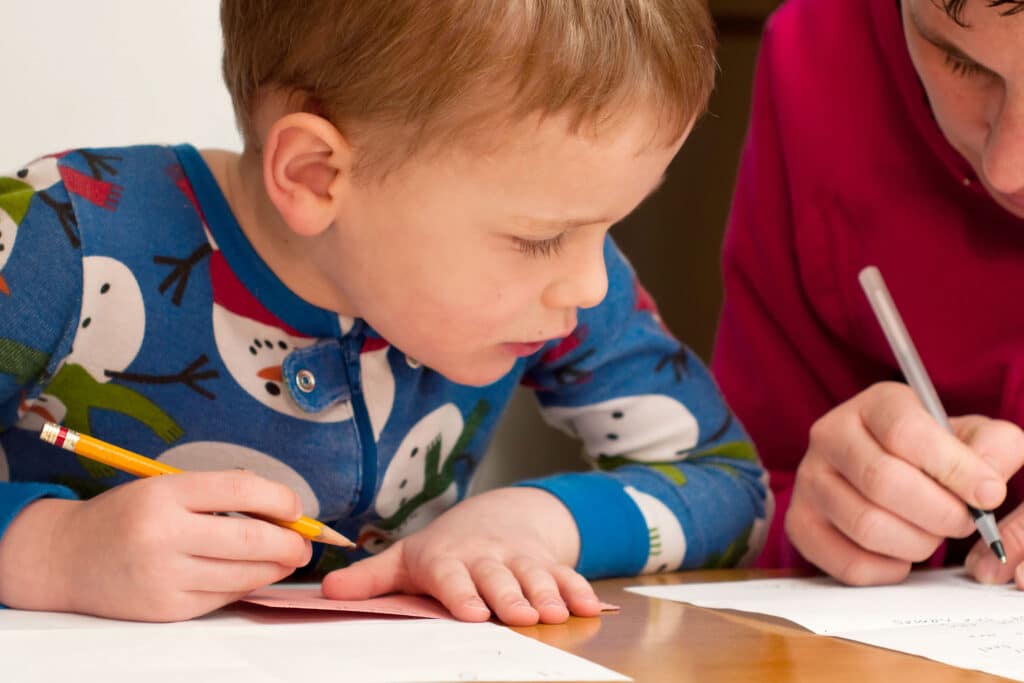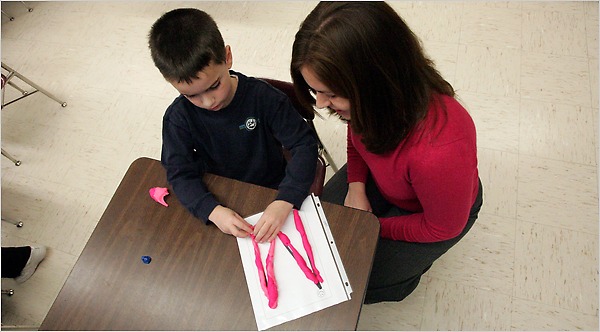
Unlocking Your Child’s Potential: The Power of Handwriting
How Occupational Therapy at Al Najma Center Makes a Difference
What Exactly is Handwriting — And Why Does It Matter?
Handwriting is more than just writing letters; it’s a complex skill involving fine motor control, coordination, and cognitive planning. Clear handwriting opens doors to academic success and personal confidence.
Is Your Child Struggling to Write? Key Signs to Watch For
Common handwriting challenges include awkward grip, messy letters, slow speed, spacing troubles, or frustration during writing.
Developmental Handwriting Milestones: What to Expect Ages 3–8

When to Seek Help: Handwriting Red Flags That Shouldn’t Be Ignored
If you notice any of the following signs in your child’s handwriting or writing behaviors, it may be helpful to consult an occupational therapist for evaluation and support:
►Persistent awkward or immature pencil grip beyond age 5
►Difficulty controlling pencil pressure—writing too hard or too lightly
►Frequent letter reversals (e.g., confusing b/d, p/q) after age 7
►Letters and words poorly spaced or crowded together
►Messy or illegible handwriting despite effort
►Very slow writing speed that impacts completing tasks
►Frequent hand, wrist, or arm fatigue or discomfort during writing
►Avoidance of writing tasks or frustration and emotional distress when asked to write
►Poor posture or awkward positioning while writing
►Difficulty copying from board or paper accurately
►Trouble with fine motor tasks beyond handwriting, such as buttoning, using scissors, or tying shoelace.
Early identification and intervention can help prevent further frustration and support your child in gaining confidence and success in handwriting.

Handwriting Program by Occupational Therapists at Al Najma Center
A step-by-step, child-focused approach by skilled occupational therapists that builds confidence and skill through assessment, play, and personalized goals.
Here’s how the program works:
♦Comprehensive Initial Assessment
We begin with a detailed evaluation to understand your child’s handwriting skills and related areas. This includes assessing pencil grip, fine motor control, posture, visual-motor integration, letter formation, speed, and endurance. The therapist also looks at sensory processing and muscle tone, which can affect writing.
♦Individualized Goal Setting
Based on the assessment, a personalized intervention plan is created with clear, achievable goals tailored to your child’s needs. Goals may focus on improving pencil grasp, letter formation, writing speed, or posture.
♦Foundational Skill Building
Before working on writing letters and words, we strengthen the foundational skills critical for handwriting success. This includes:
• Fine motor control: Exercises to improve finger and hand strength and dexterity
• Hand-eye coordination: Activities to help the brain and eyes work together smoothly
• Pencil grasp and pressure: Teaching an efficient grip and appropriate pressure to avoid fatigue or damage to paper
• Posture and body awareness: Ensuring proper seating and positioning to support enduranc
♦Multisensory, Play-Based Interventions
To make learning engaging and effective, we use multisensory techniques such as:
•Tracing letters in textured materials (sand, foam, shaving cream)
•Interactive hand and finger strengthening games
•Visual-motor tasks like copying shapes and patterns
•Use of adaptive tools or grips as needed.
♦Writing Practice & Skill Generalization
• Children practice forming letters, words, and sentences with support and gradually increase their writing stamina. We encourage transferring skills learned in therapy to classroom and home writing tasks.
• Progress Monitoring and Family Collaboration
Therapists regularly track your child’s progress and adjust goals and activities accordingly. We keep families involved by sharing updates and providing strategies to support handwriting practice at home.
• Encouraging Self-Reflection and Motivation
Children are guided to set personal handwriting goals, celebrate achievements, and develop positive attitudes toward writing.
This thorough, step-by-step approach ensures that children not only improve their handwriting skills but also gain confidence and independence, making writing a more positive and enjoyable experience.
How You Can Support Handwriting at Home: Proven Strategies for Parents
Supporting your child’s handwriting development at home is key to reinforcing therapy progress. Here are detailed, practical strategies parents can use:

►Create a Comfortable Writing Environment
Ensure your child sits in a chair and at a table appropriate to their height, so feet are flat on the floor and elbows rest comfortably on the table. Good posture supports endurance and control while writing.
►Encourage Proper Pencil Grip
Use short pencils or broken crayons to promote the tripod grasp (holding pencil between thumb, index, and middle finger). Try pencil grips or adaptive writing tools if recommended by your therapist.
►Practice Fine Motor Skills Daily
Engage in activities like playdough rolling and pinching, using tweezers or tongs to pick up small objects, or stringing beads. These strengthen hand and finger muscles essential for pencil control.
►Use Multisensory Writing Activities
Have your child practice letters by tracing them in sand, salt trays, shaving cream, or on textured surfaces. This builds muscle memory and sensory feedback.
►Work on Visual-Motor Integration
Play games that require eye-hand coordination like catching balls, puzzles, or copying patterns and shapes. These activities help children plan and execute movements needed for writing.
►Break Writing Tasks into Manageable Steps
Instead of expecting long writing sessions, encourage short, frequent practice times (5-10 minutes) to avoid fatigue and frustration. Use prompts and guides like dotted letters or lined paper with spacing marks.
►Encourage Goal Setting and Positive Reinforcement
Set small, achievable goals (e.g., writing one line of letters neatly). Praise effort and celebrate improvements rather than focusing solely on neatness.
►Develop Postural and Core Strength
Encourage activities like animal walks, yoga poses, or balance exercises to build core muscles that support sitting stability during writing.
►Monitor Pencil Pressure
Teach your child to apply moderate pressure — not too hard to tire fingers, and not too light to cause faint writing. Use pressure-sensitive paper or crayons to visualize pressure control.
►Incorporate Writing into Daily Routines
Encourage your child to write shopping lists, cards, or simple notes to make handwriting meaningful and purposeful.
Ready to Empower Your Child Through Better Handwriting?
For more information or to schedule an assessment, contact Al Najma Center today. We’re here to help your child grow—one letter at a time.
Back to Blogs


